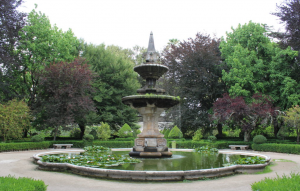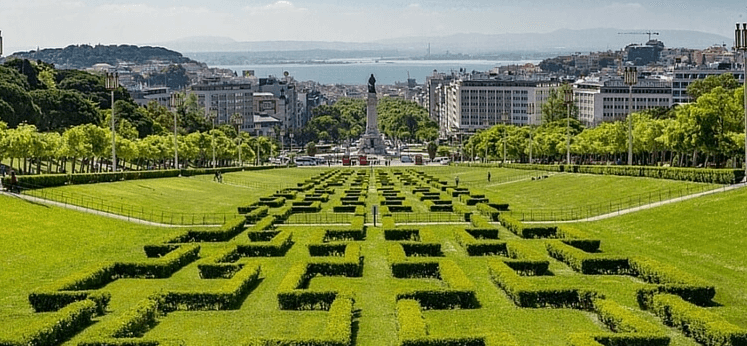Fundação Calouste Gulbenkian Garden – Lisbon
The park was created in 1969 as a part of the Calouste Gulbenkian Foundation, Gulbenkian Museum, and the José de Azeredo Perdigão Modern Art Centre. This beautiful park has two lakes on its area of 7.5 hectares. It was designed by the landscape architects Gonçalo Ribeiro Telles and António Viana Barreiro. Buildings of the mentioned institutions are brilliantly incorporated within the park, and the whole complex makes one magnificent unit. It is the place where nature meets art, where the contemporary meets ancient. The garden has an open-air amphitheatre, a venue with 1,000 seats where different dance, drama, and music programmes are organized. The amphitheatre has the lake as its backdrop which creates unique and romantic atmosphere.
Serralves Park – Porto
Parque de Serralves is located in close to Parque da Cidade, and it creates the perfect balance between contemporary art, architecture and beautiful gardens. It was designed in the 1930s by Jacques Gréber. The park also includes Serralves´ house situated very close to the main entrance. This house is one of the most prominent examples of Art Deco. The park has lovely fountains, lush vegetation areas, caves, a lake, romantic paved walks, as well as tennis court and tea house.
Bom Jesus do Monte Natural Park – Braga
Bom Jesus does Monte is a Portuguese sanctuary just outside the city of Braga. This is one of the best examples of pilgrimage sites with huge baroque stairway, beautiful buildings, and peaceful surroundings. The park includes beautiful nature, bright green waters which mirror the trees, and the centrepiece of Sanctuary – stairways which lead to the neoclassic church at the top from where you see the most beautiful view on the city of Braga.
Monserrate Park – Sintra
Palácio de Monserrate is an exotic palace located near Sintra. Its lovely surroundings are one of the most romantic parks with a lake, springs, and fountains, surrounded by rare species of plants which are organized according to their geographical origins. Over the years, the surrounding gardens have welcomed plant species from all over the world, and therefore became one of the best botanical gardens in this part of Europe. There are also lovely paths that lead through ruins and hidden nooks past the lake and waterfalls. Since 1995 this area is classified by UNESCO as World Heritage since 1995.
Coimbra Botanical Garden – Coimbra
The Botanical Garden of the University of Coimbra was founded in 1774, and it is the part of the Natural History Museum. The garden spreads over 13 hectares, and it can be divided into two areas. The first one is located at the top of the valley. It is the most formal area divided in terraces among which is the Quadrado Central or The Central which is decorated like European gardens of the 18th century. The second area includes the valley with a small stream, which does not flow lately. This part is also known as is the arboretum or Mata of the Botanical Garden. It includes the splendid bamboo forest and other exotic trees with a collection of 51 species of Eucalyptus.
